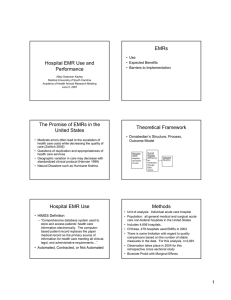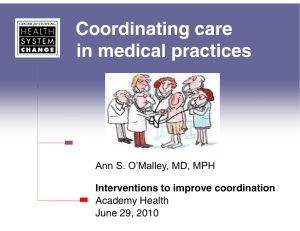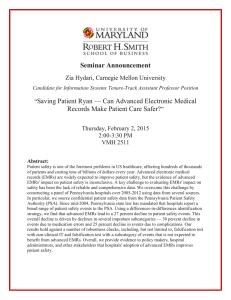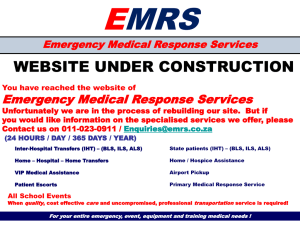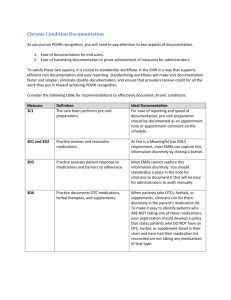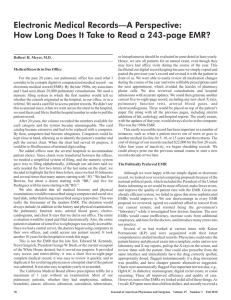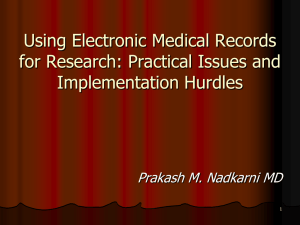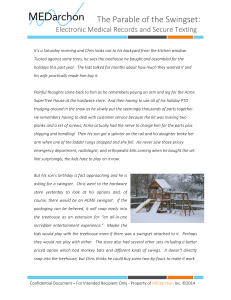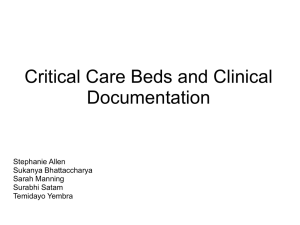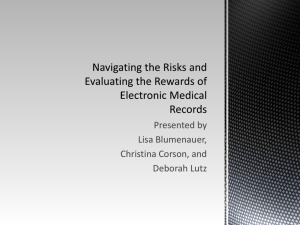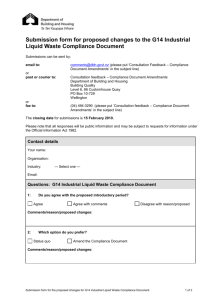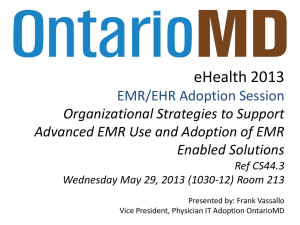Strategies for Data Model Harmonization
advertisement
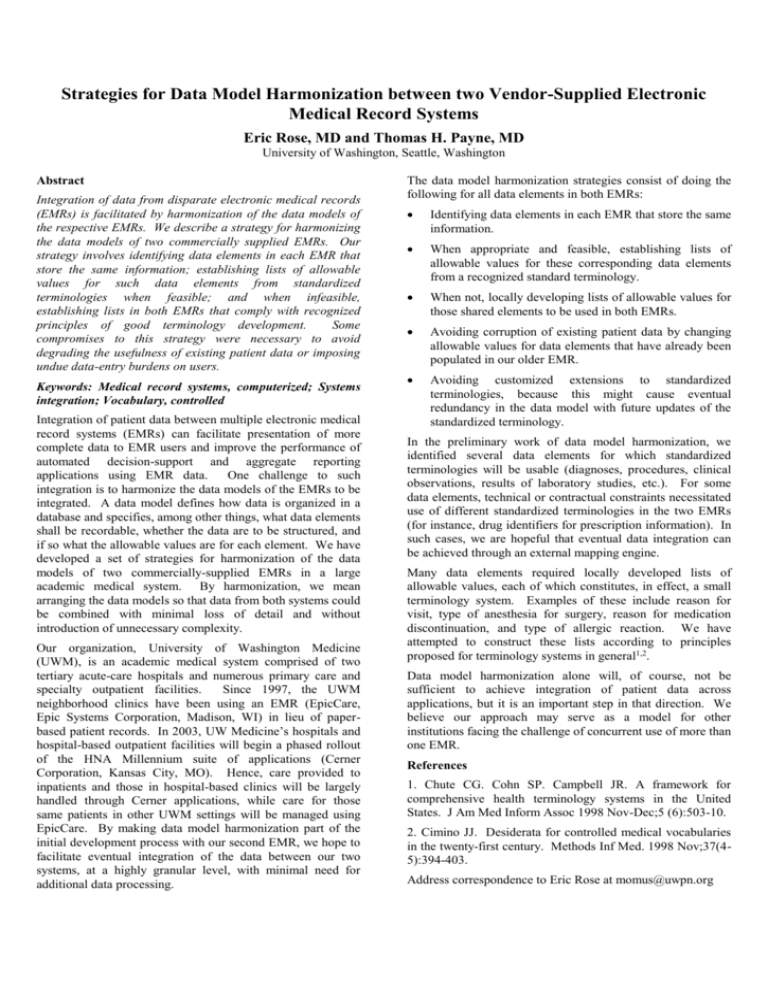
Strategies for Data Model Harmonization between two Vendor-Supplied Electronic Medical Record Systems Eric Rose, MD and Thomas H. Payne, MD University of Washington, Seattle, Washington Abstract Integration of data from disparate electronic medical records (EMRs) is facilitated by harmonization of the data models of the respective EMRs. We describe a strategy for harmonizing the data models of two commercially supplied EMRs. Our strategy involves identifying data elements in each EMR that store the same information; establishing lists of allowable values for such data elements from standardized terminologies when feasible; and when infeasible, establishing lists in both EMRs that comply with recognized principles of good terminology development. Some compromises to this strategy were necessary to avoid degrading the usefulness of existing patient data or imposing undue data-entry burdens on users. Keywords: Medical record systems, computerized; Systems integration; Vocabulary, controlled Integration of patient data between multiple electronic medical record systems (EMRs) can facilitate presentation of more complete data to EMR users and improve the performance of automated decision-support and aggregate reporting applications using EMR data. One challenge to such integration is to harmonize the data models of the EMRs to be integrated. A data model defines how data is organized in a database and specifies, among other things, what data elements shall be recordable, whether the data are to be structured, and if so what the allowable values are for each element. We have developed a set of strategies for harmonization of the data models of two commercially-supplied EMRs in a large academic medical system. By harmonization, we mean arranging the data models so that data from both systems could be combined with minimal loss of detail and without introduction of unnecessary complexity. Our organization, University of Washington Medicine (UWM), is an academic medical system comprised of two tertiary acute-care hospitals and numerous primary care and specialty outpatient facilities. Since 1997, the UWM neighborhood clinics have been using an EMR (EpicCare, Epic Systems Corporation, Madison, WI) in lieu of paperbased patient records. In 2003, UW Medicine’s hospitals and hospital-based outpatient facilities will begin a phased rollout of the HNA Millennium suite of applications (Cerner Corporation, Kansas City, MO). Hence, care provided to inpatients and those in hospital-based clinics will be largely handled through Cerner applications, while care for those same patients in other UWM settings will be managed using EpicCare. By making data model harmonization part of the initial development process with our second EMR, we hope to facilitate eventual integration of the data between our two systems, at a highly granular level, with minimal need for additional data processing. The data model harmonization strategies consist of doing the following for all data elements in both EMRs: Identifying data elements in each EMR that store the same information. When appropriate and feasible, establishing lists of allowable values for these corresponding data elements from a recognized standard terminology. When not, locally developing lists of allowable values for those shared elements to be used in both EMRs. Avoiding corruption of existing patient data by changing allowable values for data elements that have already been populated in our older EMR. Avoiding customized extensions to standardized terminologies, because this might cause eventual redundancy in the data model with future updates of the standardized terminology. In the preliminary work of data model harmonization, we identified several data elements for which standardized terminologies will be usable (diagnoses, procedures, clinical observations, results of laboratory studies, etc.). For some data elements, technical or contractual constraints necessitated use of different standardized terminologies in the two EMRs (for instance, drug identifiers for prescription information). In such cases, we are hopeful that eventual data integration can be achieved through an external mapping engine. Many data elements required locally developed lists of allowable values, each of which constitutes, in effect, a small terminology system. Examples of these include reason for visit, type of anesthesia for surgery, reason for medication discontinuation, and type of allergic reaction. We have attempted to construct these lists according to principles proposed for terminology systems in general1,2. Data model harmonization alone will, of course, not be sufficient to achieve integration of patient data across applications, but it is an important step in that direction. We believe our approach may serve as a model for other institutions facing the challenge of concurrent use of more than one EMR. References 1. Chute CG. Cohn SP. Campbell JR. A framework for comprehensive health terminology systems in the United States. J Am Med Inform Assoc 1998 Nov-Dec;5 (6):503-10. 2. Cimino JJ. Desiderata for controlled medical vocabularies in the twenty-first century. Methods Inf Med. 1998 Nov;37(45):394-403. Address correspondence to Eric Rose at momus@uwpn.org
